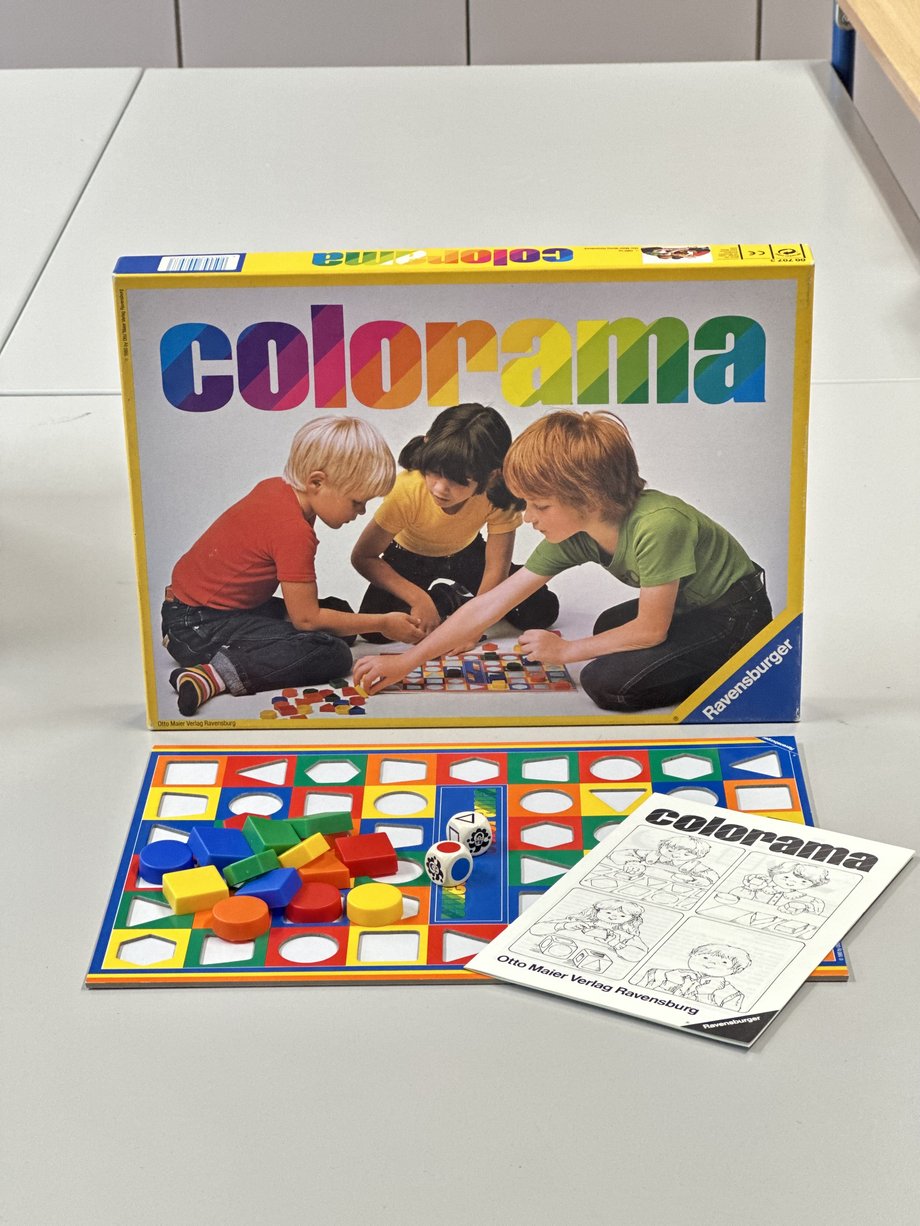Colourama Colourful and tiny
Colorama was first developed in 1974 and has been an incredibly popular and highly recommended educational game for children ever since. Colorama uses a playful approach to matching colours and shapes to teach children how to recognise them and strengthen their combinatorial thinking skills. The aim is to position or collect pieces of different colours and shapes on the game board.
Number of participants
Minimum: 1; Optimum: 2-4; Maximum: 6
Age recommendation
from 3 years
Duration
approx. 10-15 minutes
Place
Seminar room with free table
Structure and procedure
The game is the goal, so to speak. The different types also have different goals. Essentially, four different game variants can be selected in advance by the players:
- In the first game variant, the aim is to fill the game board with the corresponding game pieces. To do this, all participants receive a certain number of tiles. The player whose turn it is first places their first tile in the corresponding square. Both the colour and shape of the tile must match the square on the board - that is the only rule of the game.
- In the second game variant, the player must try to collect the most tiles in the game. The colour dice plays the main role in this game variant. The player whose turn it is rolls the dice and is allowed to collect the matching coloured token from the board. The shape of the token is absolutely irrelevant in this game variant.
- In the third game variant, the player must also try to collect the most pieces. In contrast to the second game variant, however, the player uses both the colour and the shape dice and can then collect the matching pieces.
- The aim of the fourth game variant is to place your own pieces on the game board. The two dice are used for this.
It is up to the players to decide which game variant they want to play. The age of the participating players and their comprehension skills play a key role here, as the amount of interaction can vary depending on the game variant.

